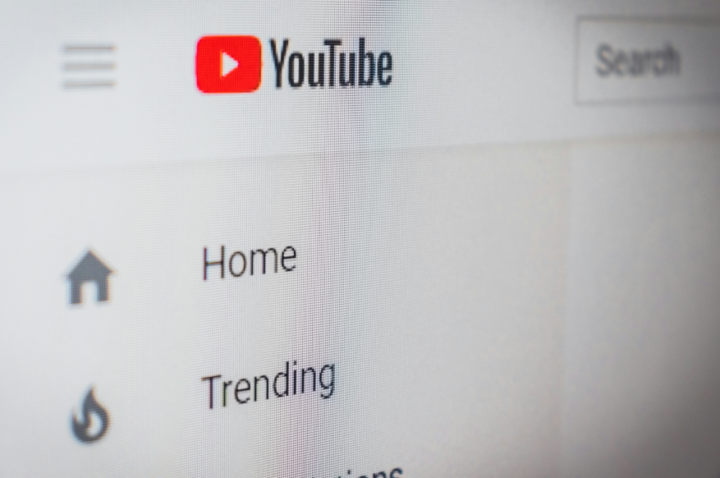The New Content Strategy for 2026: Mentions, Citations, and the Decline of the Click
As marketing leaders, we are witnessing a fundamental shift in how customers discover and interact with our brands. The traditional metrics of impressions, sessions, and click-through rates, while still relevant, no longer tell the complete story. Generative AI systems like ChatGPT, Gemini, and Perplexity are increasingly becoming the primary interface for the early stages of the customer journey, the top-of-the-funnel (TOFU) research phase that once drove millions of users to our websites. In this new landscape, visibility is not just about who ranks in search results, but who gets referenced and cited within the AI models that guide user decisions. This requires a strategic pivot in our content strategy, one that prioritizes mentions and citations as the new levers of trust and, ultimately, revenue. Recent data from a comprehensive two-year study by Siege Media, which analyzed over 7.2 million sessions across various industry blogs, reveals a significant trend: while top-of-funnel guides and "how-to" posts have seen a sharp decline in traffic, bottom-of-the-funnel (BOFU) content such as pricing pages, calculators, and comparison articles have experienced major growth. This does not mean that TOFU content is no longer important. On the contrary, it suggests that users are now conducting their initial research within generative AI platforms and only visiting websites when they are further down the funnel and closer to a purchasing decision. This is supported by the fact that engagement has increased across all major content categories, indicating that when users do arrive on our sites, they are more motivated and ready to act. The TOFU Paradox: Why Top-of-Funnel Content Matters More Than Ever This shift creates a paradox for content strategists. While TOFU content may be driving less direct traffic to our websites, it is more critical than ever for building brand awareness and trust. Generative engines are now the primary channel for the TOFU and middle-of-the-funnel (MOFU) stages of the customer journey. Users are having conversations with AI, asking questions, and getting recommendations, all without ever visiting a brand's website. When they finally do click through to a site, it is often to make a purchase or get specific, transactional information.
0
0

Building a Modern Inbound Lead Generation Engine
The traditional approach of chasing customers through outbound marketing is becoming less effective in a world saturated with advertising. The future of sustainable growth lies in building a robust inbound lead generation engine—a system designed to attract, engage, and convert prospects organically. Inbound leads are fundamentally different; they are already seeking solutions and are therefore more qualified and receptive to engagement. By creating a system where ideal clients find you, the sales process becomes more efficient and effective. Building a successful inbound engine requires a multi-faceted approach that integrates content, search visibility, and relationship-building. Here are the core components of a modern inbound strategy. The Foundation: Value-First Content The cornerstone of any successful inbound strategy is content that genuinely helps your audience. The era of shallow, keyword-stuffed articles is over. Today, both audiences and search engines reward content that offers real substance. This includes in-depth resources, practical tutorials, insightful frameworks, and data-driven case studies that address the real-world problems of your ideal customers. Every piece of content should be created with the goal of building trust. When a potential customer reads your content and feels that you truly understand their challenges, they are far more likely to take the next step in the buyer's journey. This value-driven approach to content creation has a long-term payoff, as a single high-performing asset can continue to generate leads for months or even years. Supercharging Visibility: Strategic SEO and Link Building Even the most valuable content is useless if it cannot be found. This is where a sophisticated approach to search engine optimization (SEO) and link building becomes critical. Modern SEO is less about gaming algorithms and more about deeply understanding and matching search intent. The goal is to be the most relevant, trustworthy, and comprehensive answer available when a potential customer asks a question.
0
0

Understanding YouTube SEO and Why It Matters for Your Channel
With more than 2.5 billion monthly users and over 20 billion videos competing for attention, standing out on YouTube requires more than quality content. YouTube SEO provides the framework for making your videos discoverable to the audiences actively searching for what you offer. This analysis examines what YouTube SEO entails, why it matters for channel growth, and the core principles that determine video visibility in 2025. What YouTube SEO Actually Means YouTube SEO refers to the systematic optimization of videos and channels to achieve higher rankings in search results and increased visibility in recommendation feeds. When users search for topics such as product reviews, tutorials, or industry insights, YouTube evaluates which videos best match both the query intent and viewer satisfaction metrics. The platform operates differently from traditional search engines. While Google prioritizes matching search intent through content relevance and authority signals, YouTube adds a critical dimension: viewer retention and engagement. A video can target the right keywords but fail to rank if viewers consistently click away after a few seconds. This creates a dual optimization challenge. Videos must signal topical relevance through metadata while also delivering content that keeps viewers watching. Both elements work together to determine visibility. Why YouTube SEO Matters in 2025 Several factors make YouTube optimization increasingly important for organizations and content creators seeking to build audience reach. First, the platform offers sustained visibility. Unlike social media posts that disappear from feeds within hours, optimized YouTube videos can attract viewers for months or years after publication. A well-optimized tutorial published today may still generate traffic two years from now if it maintains relevance and continues satisfying viewer intent. Second, search remains a significant discovery mechanism. While YouTube's recommendation algorithm drives the majority of views, search queries still account for substantial traffic, particularly for educational content, product research, and how-to videos. Ranking for the right search terms delivers consistent, targeted viewership.
2
0

Integrating Voice Search Optimization Into Your Content Strategy
Voice search is changing how users discover information. Instead of typing short keywords, users speak full questions into phones, smart speakers, and virtual assistants. To maintain visibility, brands must build content that aligns with spoken language, direct answers, and user intent. Voice SEO focuses on natural phrasing, structured information, and mobile-friendly experiences to help search engines select your content when reading answers aloud. The strategic challenge is adapting existing content approaches to serve both typed and spoken queries without creating separate optimization tracks. Understanding Search Language Changes Voice search queries tend to be longer and more conversational than typed ones. Instead of "running shoes reviews," users say, "What are the best running shoes for long-distance training?" This shift requires content that mirrors how people talk rather than how they type. Include sentences and subheadings that reflect natural questions. Target long-tail phrases beginning with "how," "why," "what," "when," and "where." This approach helps your content appear in featured snippets or answer boxes that smart devices often use to respond. The content that wins voice search is content that directly answers the question a user asked, in the format and length that voice assistants prefer to read aloud. Using Clear Structure and Snippet-Friendly Formatting Voice assistants pull brief, well-structured answers. Pages with short paragraphs, simple headers, and direct summaries have higher chances of being selected. Add FAQ sections to key pages and answer each question in one or two sentences. Use bullet points to list steps, ingredients, or comparisons whenever possible. Start with common user questions as headers, follow each with a 40-50 word answer, use lists to present solutions quickly, and place the most valuable information at the beginning. This structure serves both voice assistants looking for clean answers and human readers scanning for quick information.
0
0

The Product Demo as a Strategic Asset: A Framework for Conversion and Differentiation
In the modern B2B landscape, the product demo has evolved from a routine sales presentation into a critical, value-driven touchpoint that can define the customer relationship. A high-impact demo is no longer just a feature showcase; it is a strategic asset that builds credibility, differentiates our brand, and accelerates the sales cycle. Too often, however, demos are treated as a tactical sales function, resulting in inconsistent messaging and missed opportunities. This guide provides a strategic framework for transforming your product demonstrations from a simple sales tool into a powerful engine for growth. We will move beyond scripted feature lists to a more sophisticated model grounded in customer empathy, competitive insight, and operational discipline. The Business Case: From Feature Tour to Revenue Driver A world-class product demonstration program delivers a measurable return on investment by directly influencing key business metrics: •Accelerated Sales Cycles: By effectively addressing customer pain points and building confidence, a strong demo can shorten the time from initial interest to purchase decision. •Increased Conversion Rates: A demo that is tailored to the specific needs of the prospect and clearly articulates a unique value proposition will consistently outperform a generic, one-size-fits-all presentation. •Enhanced Brand Credibility: A well-executed demo positions your brand as a trusted advisor, not just a vendor. This builds long-term relationships and increases customer lifetime value. A Four-Pillar Framework for a High-Impact Demo Program To build a scalable and effective demo program, we must move beyond individual heroics and implement a structured, four-pillar framework. 1. The Expertise Pillar: Building a Foundation of Knowledge A successful demo is built on a deep understanding of both the product and the problem it solves. This requires a commitment to building a culture of expertise across the organization. This pillar involves:
0
0

1-30 of 44

skool.com/seo-success-academy
Welcome to SEO Success Academy – the ultimate destination for business owners, digital marketers and agencies to master the art and science of SEO.
Powered by


